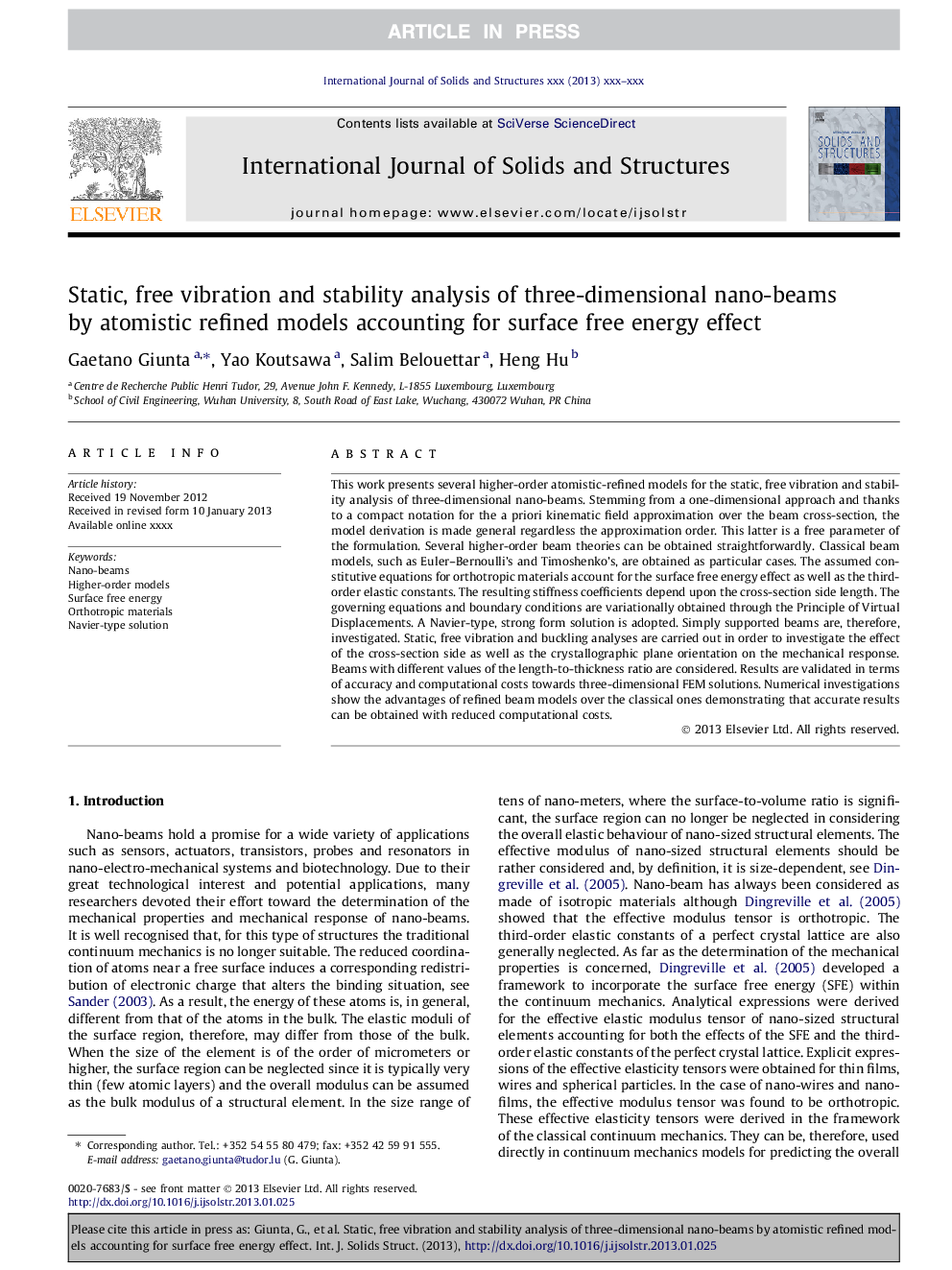| Article ID | Journal | Published Year | Pages | File Type |
|---|---|---|---|---|
| 6749314 | International Journal of Solids and Structures | 2013 | 13 Pages |
Abstract
This work presents several higher-order atomistic-refined models for the static, free vibration and stability analysis of three-dimensional nano-beams. Stemming from a one-dimensional approach and thanks to a compact notation for the a priori kinematic field approximation over the beam cross-section, the model derivation is made general regardless the approximation order. This latter is a free parameter of the formulation. Several higher-order beam theories can be obtained straightforwardly. Classical beam models, such as Euler-Bernoulli's and Timoshenko's, are obtained as particular cases. The assumed constitutive equations for orthotropic materials account for the surface free energy effect as well as the third-order elastic constants. The resulting stiffness coefficients depend upon the cross-section side length. The governing equations and boundary conditions are variationally obtained through the Principle of Virtual Displacements. A Navier-type, strong form solution is adopted. Simply supported beams are, therefore, investigated. Static, free vibration and buckling analyses are carried out in order to investigate the effect of the cross-section side as well as the crystallographic plane orientation on the mechanical response. Beams with different values of the length-to-thickness ratio are considered. Results are validated in terms of accuracy and computational costs towards three-dimensional FEM solutions. Numerical investigations show the advantages of refined beam models over the classical ones demonstrating that accurate results can be obtained with reduced computational costs.
Related Topics
Physical Sciences and Engineering
Engineering
Civil and Structural Engineering
Authors
Gaetano Giunta, Yao Koutsawa, Salim Belouettar, Heng Hu,
